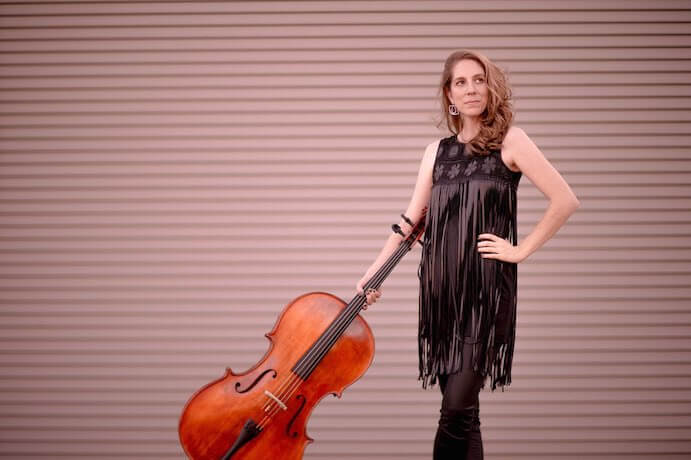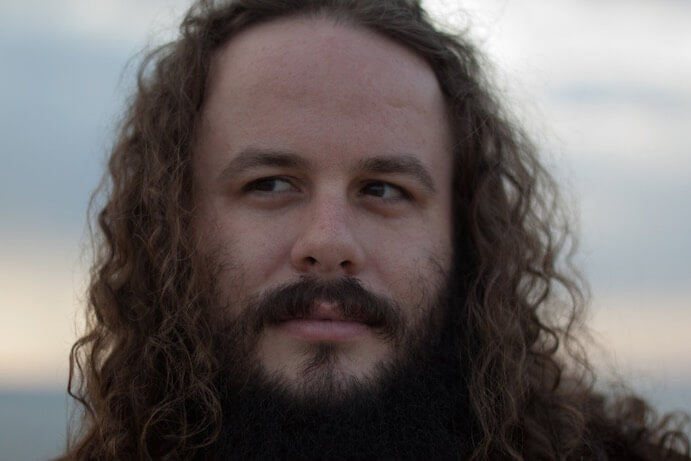Music doesn’t have to tell a story. However, when people collaborate to create music, the music often intentionally or unintentionally, reflects those interactions. Sweet Anxiety by cellist Ashley Walters, and “for Duane” by composer Nicholas Deyoe on the populist records label are emblematic of the highly personal endeavors and collaborations of a particularly tight knit community of Los Angeles based performers, ensembles, and composers.
Ashley Walters’ debut solo album, “…seeks to challenge your perception of what the cello, a stereotypically gentle instrument, is capable of.” Walters takes this initiative seriously, pushing the technical boundaries of the cello as well as her own musical virtuosity to absolute extremes. The works curated on her album represent personal efforts exploring existing works and new works born out of close collaborations with LA based composers.
Walters’ highly researched and personal interpretation of Berio’s Sequenza XIV for solo cello (2002) is singularly bold in its near obsessive attention to the clarity and expression of sonic detail. This attention is readily apparent in sections featuring dense, polyphonic, percussive techniques, alluding to the Kandyan drum of Sri Lanka. In Berio’s trademark high lyricism, Walters’ performance has the utmost of intention, character, and direction, moving along a seemingly limitless gradient of dynamic and timbral possibilities. This performance alone is reason to pick up her album.

Sweet anxiety features two works born out of close collaboration between Deyoe and Walters: For Stephanie (on our wedding day) (2009) was written as a surprise for Deyoe’s wife on their wedding day, and another anxiety (2013) reflects Deyoe’s understanding of Walters’ technical and musical capacities as informed by their many collaborations. Both works showcase Walters’ unique style, but another anxiety playfully pushes the limits of her technical dexterity. Fast passages in the left hand are combined with various bow pressures and techniques resulting in dense, noisy, often electronic sounding textures. Walters’ ability to effortlessly switch between these complex textures and “simple” drones or melodies lends a conversational tone to the form of works Deyoe’s works.
Plainsong Litany (2004) by Wolfgang Von Schweinitz and Sweet Bay Magnolia with Berry Clusters (2013) by Wadada Leo Smith showcase Walters’ masterful navigation of long form compositions. The surface level, meditative simplicity of these works belies their underlying complexity. Schweintiz explores three, two note microtonal chords emerging from various partials of a modified overtone series. Here, Walters’ attention to intonation and timbre creates an intimate and timeless soundscape. Smith’s composition consists of a series of diverse sonic “fields” through which the performer wanders. As the piece develops, rich sustained drones give way to repeated, unfolding melodic developments as well as explosive improvisations.
Another Secular Calvinist Creed by Walters’ quartet-mate Andrew McIntosh also expertly plays with the human ability to recognize repetition despite variation. Repetitions of looped ascending and descending microtonal scale are interrupted through the addition of lower, almost contrapuntal notes. Here, Walters reaps the reward for her efforts throughout her album. Focused on the repeated musical material, the microtonality and harmonics do not seem experimental or foreign–they have become part of her new conception of the instrument.
The compositions Nicholas Deyoe includes on “for Duane” demonstrate a compositional approach which prioritizes collaboration. His timbrally rich, texturally complex, and often textually informed works highlight the abilities of the musicians and ensembles with which he regularly works. Finally, the cylindrical voids tapping along (2016) opens “for Duane” featuring soprano Stephanie Atson, Deyoe’s wife, accompanied by a mixed quartet comprised of members of wasteLand. The text by Allison Carter reflects contemporary anxiety, isolation, and purpose in the face of overwhelmingly limitless possibilities. Aston, through Deyoe’s setting, captures this reflective yet frenetic character through unadorned lyricism, dramatic recitation, and dazzling, gravity defying, vocal athleticism. Creating a dramatic textural context for the lyrics, Deyoe’s writing is most evocative when the accompaniment timbrally mimics the sounds of the words themselves.

1560, performed by the Aperture Duo, explores space as the violinist and violist move between three different locations of varying proximity to both one another as well as the audience. The recording adequately solves the challenges of rendering this effect through shifts in panning. The precision and interpretation by the Aperture Duo make up for any shortcomings in the recording process, creating a distinct sense of unity and independence through careful attention to timbre and dynamic balance.
Immer Wieder and Lied/Lied bridge the first and third acts of the album but also showcase uniquely personal moments. Immer Weid is a simple unaccompanied song with text by poet Rainer Maria Rilke composed for Ashley Walters’ wedding. Leid/Leid features poetry by Batya MacAdam-Somer, which she recites while playing a variety of accompanimental passages. MacAdam-Somer’s performance appears self-reflective as the text addresses what appear be the internal and external pressures she faced as a young violinist.
Lullaby 6, “for Duane”, is a concerto for amplified Cello and 9 instruments, was conceived for Ashley Walters and complicates the identity of the cello. Amplifying the cello heightens the presence and physicality of even the most nuanced sounds. These sounds are foregrounded as part of an often dense, undulating, and highly dramatic ensemble texture. The work ends with a more delicate version of the previous sound scape, in which Walters’ plays a highly evocative, harmonic laden lament. The album ends with the somber cello melody lingering… unadorned and unaccompanied.
Walters and Deyoe’s conceptually well-conceived and realized albums speak to the power of investing, developing, and sharing the stories of local communities. The music on their albums is literally inconceivable without the network of family, friends, and colleagues supporting one another. Within the context of the greater musical scene of Los Angeles, these artists are proving that collaboration and community are not just buzzwords, they are foundational.
























